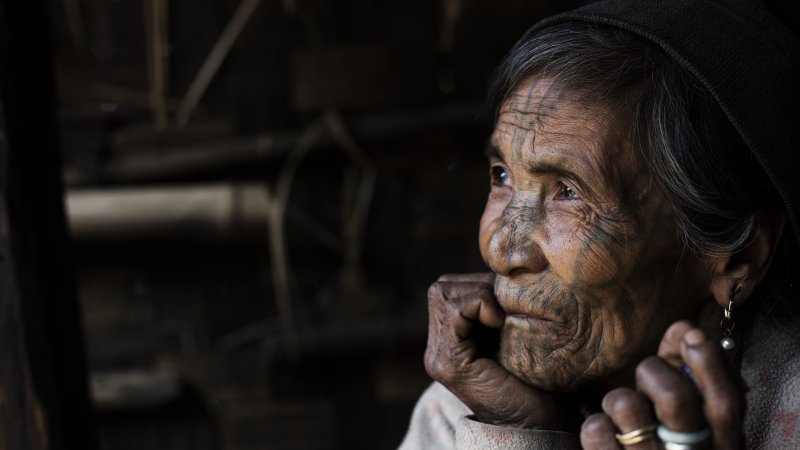Honoring Those Who Faced Death to Secure Our Religious Freedom, This UN Day Against Torture
June 26 is the date the United Nations has proclaimed International Day in Support of Victims of Torture.
Today, torture is a crime under international law.

Almost every country in the world has ratified the Convention Against Torture and Other Cruel, Inhuman or Degrading Treatment or Punishment by which nations guarantee not to permit torture in any territory under their jurisdiction. A prohibition against torture was also made part of the Universal Declaration of Human Rights in 1948 which has, in turn, been adopted by most of the nations of Earth.
While the reality often falls considerably short of what is written on paper, that an overwhelming majority of countries officially outlaw torture today is a major improvement over the vast majority of human history, throughout which torture was regarded as a vital element of public safety and inflicted by the state as a legitimate form of interrogation and punishment.
Among those who most often endured this officially induced torment were individuals whose religious beliefs were considered a threat by those in positions of power—because those beliefs differed from the ones endorsed and enforced by the state. As a result of the strength of their commitment to their religious convictions, the victims often refused to compromise their principles even under extreme duress, making their suffering worse, yet the example they set more powerful and enduring.
It has been remembered for several centuries as a simple but powerful statement of the determination of those courageous women who stuck by their beliefs.
As one example, in France for much of the 17th and 18th centuries, Protestants, called Huguenots, faced heavy persecution for refusing to follow the country’s official Catholic religion. Many suffered cruel punishment, including death. For over 100 women, the official persecution meted out by the combination of church and state consisted of being imprisoned—in some cases for decades—in a small tower in southern France initially built as a military outpost for a few sentries. They were confined in a space that let in so little light many of the women went blind, while at the same time being exposed to the elements.
The best-remembered of the prisoners was Marie Durand, known for providing comfort and encouragement to her fellow prisoners as well as for her correspondence. Durand was arrested and sent to the tower as a teenager in 1730, and remained imprisoned until an outraged provincial governor stood up to royal and clerical disapproval and released all of the remaining prisoners in 1768.
During the entire time the Tower of Constance was in operation, Durand and any of the other women could have been released simply by agreeing to give up their faith, which they were frequently asked to do. Almost none chose to. When the liberators set free the last of the prisoners and inspected the empty prison, they found carved in the tower’s stone floor the word “Resistez” (Resist). No one is sure who made the inscription but it has been remembered for several centuries as a simple but powerful statement of the determination of those courageous women who stuck by their beliefs.
Probably the darkest example of the use of torture to compel religious belief in the Western world was that imposed under the auspices of the Catholic Church. The purpose of the torture was to keep all of Europe under one version of Christianity, governed by Rome. Anyone questioning or disbelieving church doctrine could be labeled a heretic and imprisoned. Most of the enforcement proceedings were conducted by inquisitions which began in the 12th century and operated in different parts of Europe. Suspected heretics were arrested and, while imprisoned, were often subject to one or more of a large variety of physical tortures—including starvation, physical mutilation and burning.

One of the most famous victims of the effort to enforce religious conformity was the Czech reformer Jan Huss, who was burned at the stake in 1415 due to his writings which criticized some church practices, among them the selling of indulgences. He also advocated making the Bible more accessible to the common people, in opposition to church authority, and helped produce a translation of the scripture into Czech. Huss’ writings were becoming increasingly popular in the area in which he lived, then known as Bohemia, and his teachings became the basis of the Moravian Church which exists to this day. Authorities in his own time viewed Huss as a threat and lured him to a church council by inviting him to present there and promising fair treatment.
On arrival, Huss was instead imprisoned, and was kept in chains for almost three months while inadequately fed, becoming ill. Despite what he had endured, he was able to mount a vigorous defense when called before a tribunal. As with the prisoners of the Tower of Constance, he rejected many offers to be released should he recant. He was given one last chance after his death sentence was pronounced, to which he is believed to have replied, “In the truth that I proclaimed through all my life, I will gladly die today.”
In spite of, and possibly to some extent because of, the oppressive effort to suppress dissent, a century later the Protestant Reformation split European Christianity into many different variations. Unfortunately, most of the new churches had the same attitude toward those who openly disagreed with their doctrines as did the Catholics—ruthlessly suppressing other views in areas they controlled.
The Puritans responded by whipping, mutilating and hanging Quakers.
England during the 16th century was particularly rough for those who defied orthodoxy. Henry VIII took England out of the Catholic Church in 1534 to obtain a royal divorce, proclaimed the King of England the head of the church (rather than the pope), and thereby created the Church of England, also known as the Anglican Church. However, after his death and that of his son, his daughter Mary took the throne. Mary tried to enforce a return to Catholicism which included torture and burning at the stake of some clergy and others who would not return to the “true faith.” Many bravely accepted a painful death rather than give up their beliefs. In one instance, a former Archbishop of Canterbury, having recanted in writing his departure from Catholicism after three years of imprisonment, publicly withdrew his recantation and placed his hand into the fire at his execution, saying “as my hand offended, writing contrary to my heart, my hand shall first be punished.”
So barbaric was Queen Mary’s reign that she has gone down in history as “Bloody Mary.”
In a direct reversal, Mary’s death brought the Protestant Elizabeth to the throne and restored the Church of England to supremacy with her as its head. All who openly dissented or failed to attend Anglican worship services were subject to punishment, but the worst treatment was reserved for Catholics. A law adopted in 1571 made it an act of treason to question the queen’s title as head of the church, making all Catholics—who, as a matter of faith, believed the pope to be the head of all Christianity—automatically traitors. Catholic priests had to operate underground for over a century and if captured were subject to torture in an effort to force them to recant. When they refused to renounce Catholicism, they faced the grisly death meted out to traitors under English law at the time. Despite the punishments, there were priests who refused to abandon England to what they believed to be heresy and suffered the consequences when they were captured.
One of the best-known individuals to be caught up in the conflict was a 16th-century priest named Edmund Campion. His upbringing spanned England’s wrenching transitions from Protestantism to Catholicism and back again. He seemed to emerge from it a rising-star Anglican minister and scholar winning favor with Queen Elizabeth and other English notables. However, after considerable wrestling with his conscience, he put his faith in Catholicism, giving up his position and promise of advancement in England. He lived outside his native country for a time, but felt called to return both to minister to English Catholics practicing in secret and to attempt to return England to Rome. Betrayed and captured, he passed the last months of his life before his execution in severe pain from torture in the Tower of London, though he never abandoned his convictions.

In the next century, England’s continued oppression of religious minorities sent thousands of settlers to North America where they could practice freely. The largest contingent, the Puritans (named after their desire to purify the Church of England), settled mostly in New England beginning in the early 1600s. While Puritans in England did not face penalties as harsh as the Catholics, the Puritans were subject to jailing, whipping and sometimes physical mutilation for refusing to conform to orthodox practice.
It would be nice to think that the Puritans learned tolerance from their own experience but such was not the case. Dissent from their very narrow interpretation of Christian doctrine was outlawed in Massachusetts and elsewhere in New England. Usually the penalty was exile, but if the exiles refused to stay away, the authorities would make things worse.
Another new religious group with whom the Puritans were on a collision course was the Quakers, who came into existence in the mid-1600s and believed they were called to disseminate their doctrines in Puritan-controlled areas and other places. Thus, they ignored all orders and kept returning to Puritan settlements. The Puritans responded by whipping, mutilating and hanging Quakers. Ultimately, they made a law that called for Quakers to be whipped from town to town until out of Puritan territory, but that did not stop Quakers from appearing in New England communities.
At this point, in the last half of the 17th century, it may have seemed that much of the world was doomed to go on as it had, with religious conformity enforced by physical pain and death.
But that is not what happened.
The Inquisition would execute its last victim in 1826 and cease to exist altogether within a matter of years.
Revulsion against Massachusetts’ treatment of Quakers caused them to back down from many of their harsher penalties. The religious convulsions which had gripped England for over a century finally resulted in the passage of the Toleration Act in 1689 which gave limited rights to dissenters and was applicable to the colonies. Puritan New England begrudgingly began to accept Quakers, Baptists and other minorities in its communities. It also helped that when the Quakers got their own colony in 1681 with the founding of Pennsylvania, they set a high standard for tolerance in practice, not just in words.
In the next century, the momentum in favor of liberty of conscience would result in religious freedom becoming the law of the land in the United States, France and other countries. The Inquisition would execute its last victim in 1826 and cease to exist altogether within a matter of years.
Meanwhile, the movement toward the abolition of torture as a mechanism of law enforcement began in the middle of the 18th century as part of the trend toward human rights—a trend which was very much influenced by the growing demand for religious freedom. By the middle of the 19th century, most Western governments had abolished torture as a matter of law. The adoption of the Universal Declaration of Human Rights and the Convention Against Torture in the 20th century led governments throughout the world to make the same commitment.
Scholars debate what is responsible for torture being abolished, just as they debate why it is so difficult to move beyond written laws and treaties to actually make torture itself a thing of the past. Whatever they may ultimately conclude, it is hard to ignore the example of the brave men and women whose faith proved stronger than physical duress, nor can we ignore that their fortitude provided considerable impetus toward both religious freedom and a higher standard of justice. It remains to us, the current generation, to continue on the path to end torture, not just on paper but in practice, just as we continue to work to make religious freedom a reality for us all.










